2025 Fall report
Noriaki KIMURA (Graduate school of Frontier Sciences, The University of Tokyo) , Arctic Sea Ice Information Center
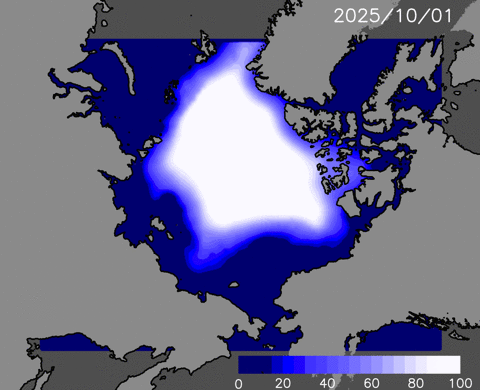
- Sea ice expansion expected to be slower than normal in many regions.
- Sea ice to reach Russian coast around Oct. 10 and Canadian coast (except archipelago) around Oct. 20, closing routes.
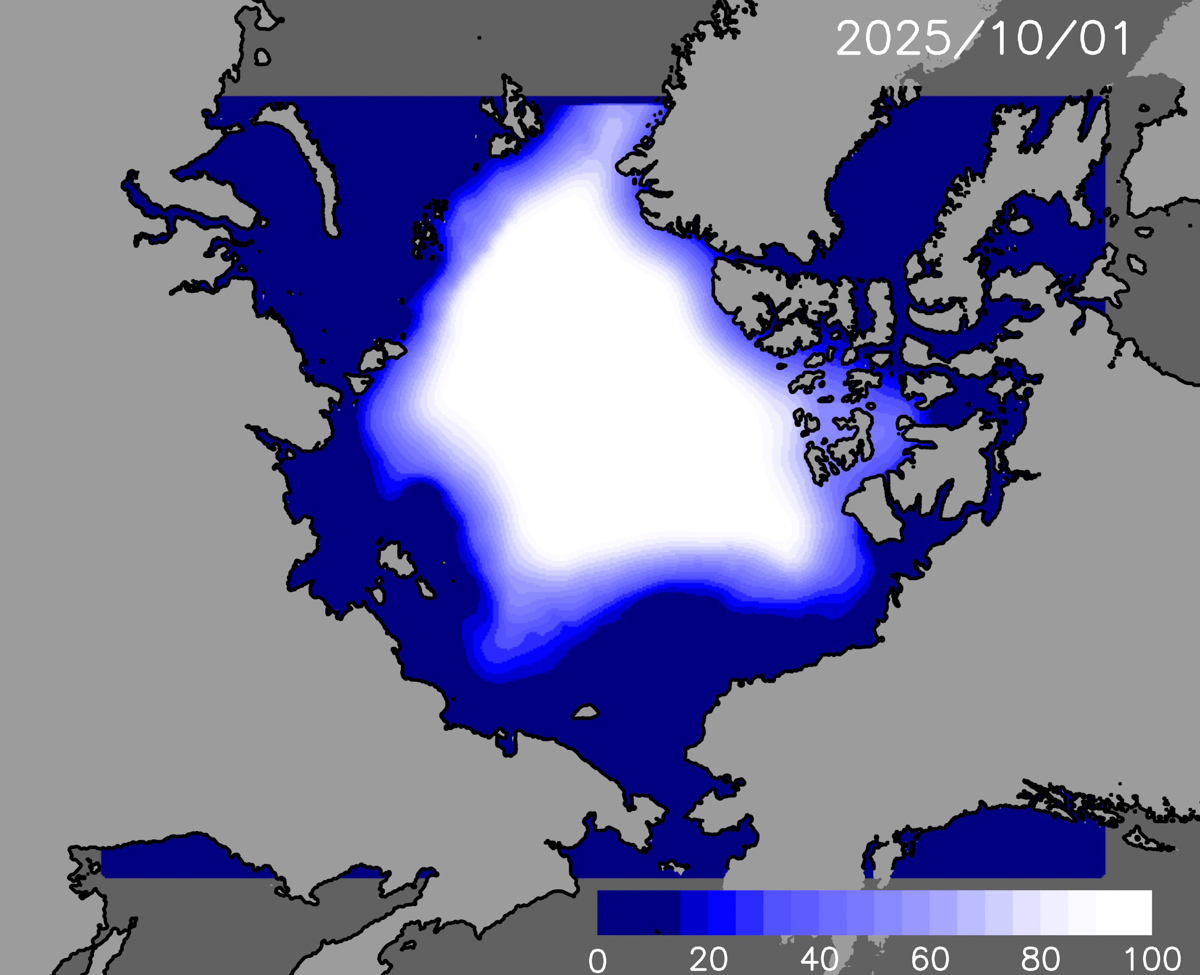
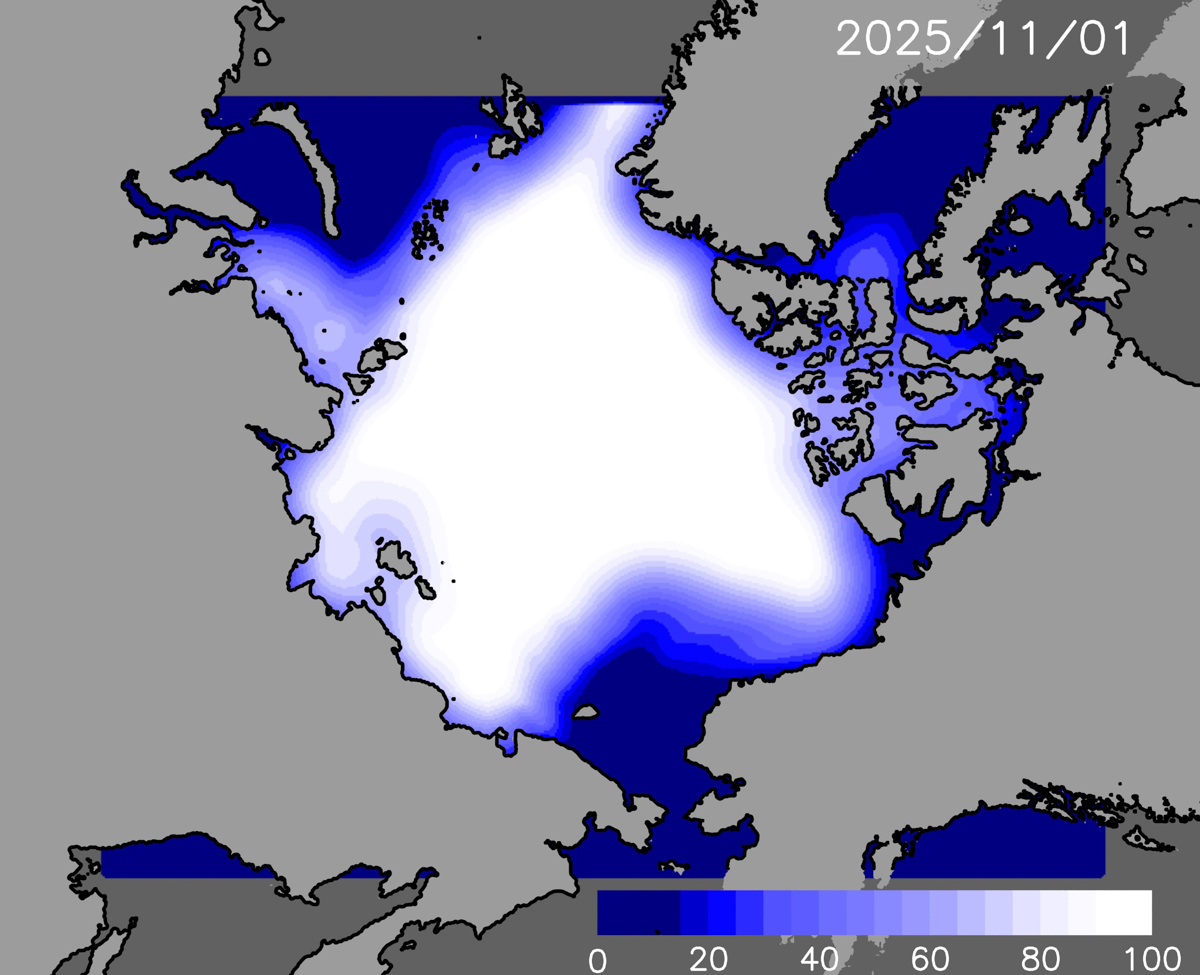
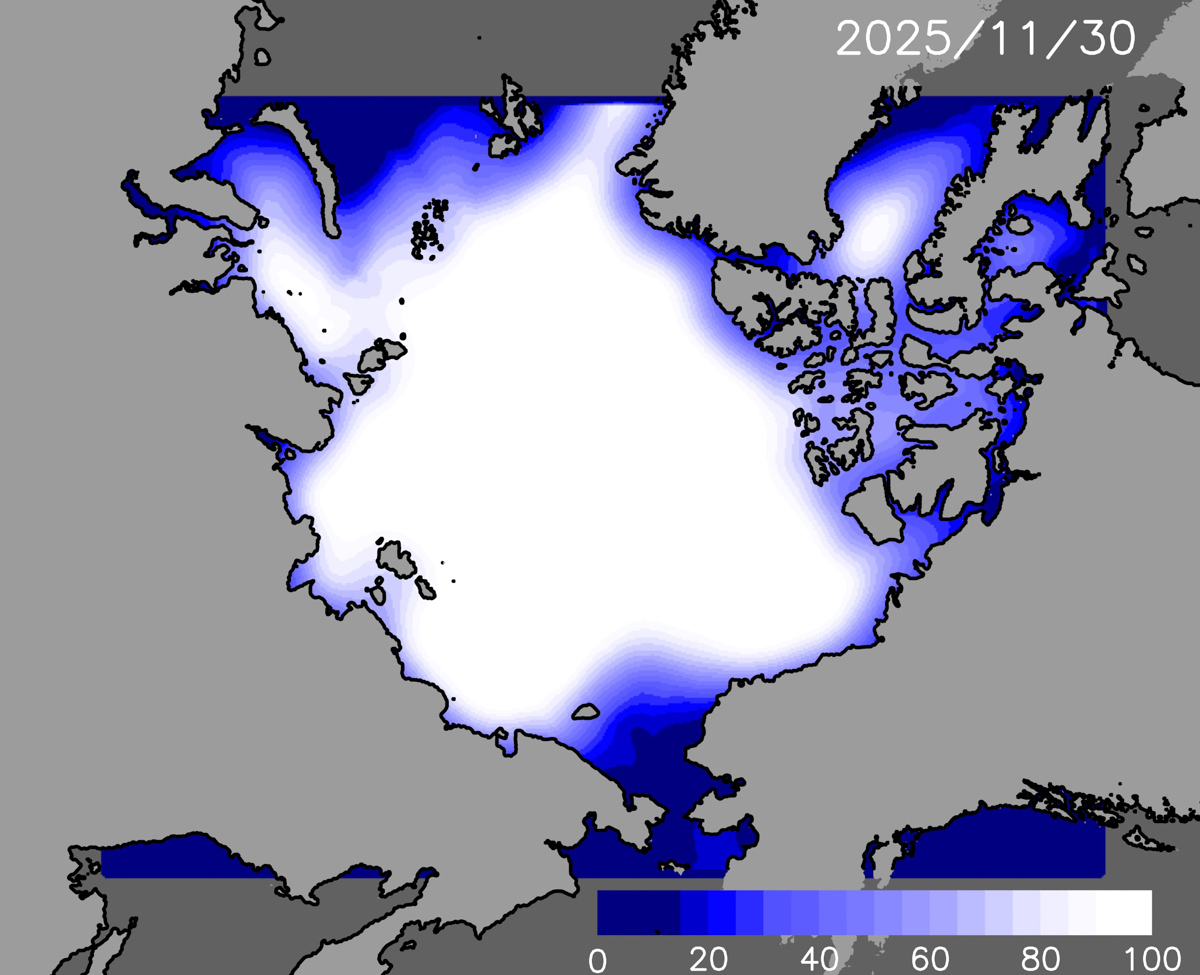
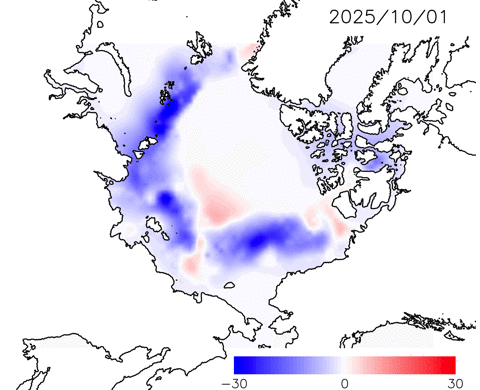
The Arctic sea ice extent reached its annual minimum around September 7 and started to expand. Compared with the 2003–2024 average, more ice remains in the East Siberian Sea and parts of the Canadian coast, while in other regions the sea ice extent retreated more than usual. In those regions where the retreat was substantial, the expansion of sea ice is expected to be delayed. In particular, the Bering Strait and Chukchi Sea are likely to remain relatively ice-free even through the end of November.
The seasonal evolution of Arctic sea ice area generally follows a reverse pattern between melt and growth: when ice disappears early in summer, the subsequent autumn freeze-up tends to be delayed. Thus, there is a correlation between the timing of ice loss at a given location and the timing of autumn ice advance.This forecast was made using 20 years of data from 2003 to 2024, based on the correlation between the number of ice-free days from May 1 to September 1 and sea-ice concentration from October 1 onward.
For this prediction, we used the sea ice data from satellite microwave sensors AMSR-E and AMSR2.
You can also check the daily forecast and sea ice age data (daily and yearly) on Arctic Data archive System (ADS) at National Institute of Polar Research.
If you have any questions about satellite monitoring of the Arctic Ocean, sea ice forecasting, or the forecasting methods used here, please contact the Arctic Sea Ice Information Center (
).
The sea ice forecast and its basic research were started in GRENE, continued to ArCS Project, and has been conducted in ArCS II Project since 2020.


